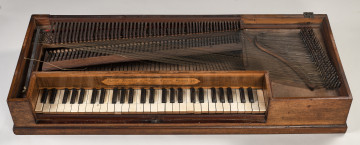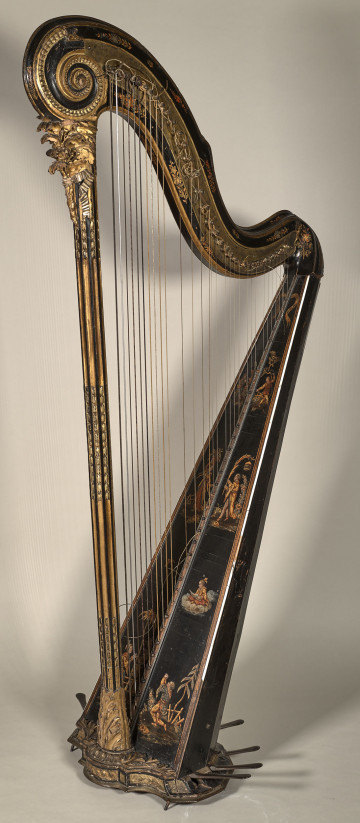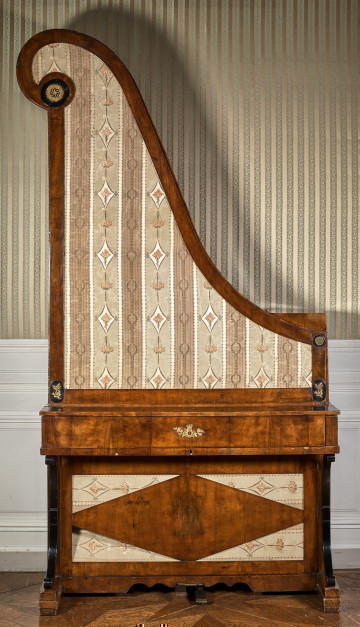
Square piano
1785
Castle Museum in Łańcut
Part of the collection: Weapons, music instruments, varia
Physharmonicas, like the related harmonium, belong to wind keyboard musical instruments (idiophones), in which metal tongues vibrate under the pressure of a stream of air, producing a sound (as in a harmonica or harmony). A number of experiments and inventions in the construction of this type of musical instruments were introduced in the 19th century. Physharmonicas were constructed by Jacob Deutschmann (1795-1853), a citizen of Vienna from 1822. In the instruments made by him, the air stream was sucked inside, stimulating the metal tongues to vibrate. In the harmonium, the air blown in with the help of bellows accumulates in the reservoir, from which it is then blown under pressure onto the metal tongues and causes them to vibrate. The harmonium, less complicated and simpler in construction than the hysharmonica, did not have additional keyboards and sound registers (voices). Deutschmann instruments were arousing much interest. One of them was purchased for the castle in Łańcut. The instrument preserved to this day, with a 6-octave F1 - f4 keyboard, is exhibited in the Chinese Suite. Before World War II, the Łańcut physharmonicas was located in the Turkish Apartment. It was mistakenly described as "Deutsmann's 18th-century Viennese travel clavichord." The instrument bears the artist's plaque "J.DEUTSCHMANN in Wien". The form and details of the walnut veneered case indicate that it was made at the beginning of the 1830s at the latest. Indeed, in 1833, in the castle expenses for Alfred I Potocki, it was written: "the transport of the Füssharmonika was paid". It is probably the same instrument that decorates the interiors of the castle in Łańcut.
Teresa Bagińska-Żurawska https://orcid.org/0000-0002-9243-3967
Author / creator
Object type
musical instruments
Technique
construction of musical instruments
Material
metal, nut wood, Heban wood, bone, brass, silk (fabric), rosewood
Creation time / dating
Creation / finding place
Owner
Muzeum - Zamek w Łańcucie
Identification number
Location / status

1785
Castle Museum in Łańcut

1789 — 1800
Castle Museum in Łańcut

1820 — 1830
Castle Museum in Łańcut
DISCOVER this TOPIC
Castle Museum in Łańcut
DISCOVER this PATH
Educational path